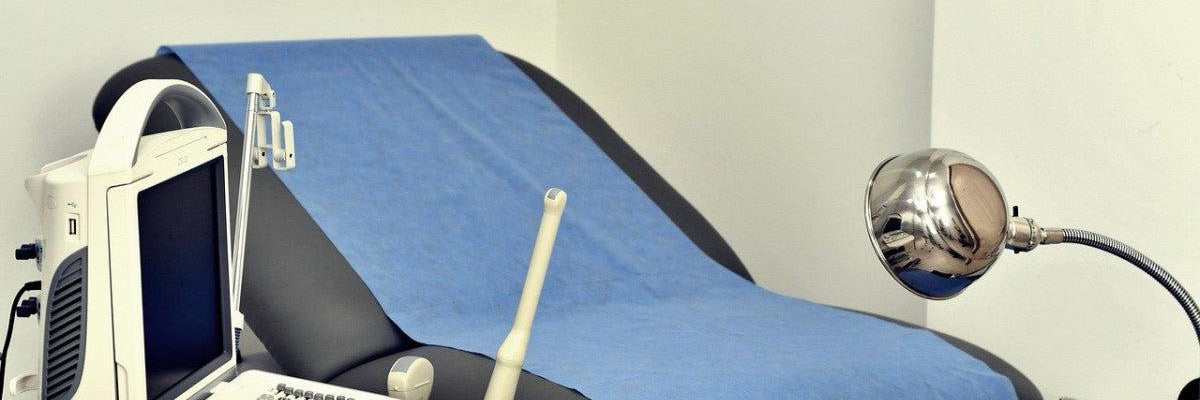Qu'est-ce qu'un curetage ? Dans quel cas est-il réalisé ?
6 novembre 2024

Qu’est-ce qu’un curetage ?
Le curetage, est une intervention médicale qui est parfois nécessaire à la suite d’un arrêt de grossesse, que ce soit par IVG ou par fausse-couche.
En effet dans ces cas de grossesses interrompues, l’utérus est censé expulser naturellement la totalité de l’embryon, de placenta et de l’endomètre. Néanmoins, certains débris peuvent y rester et un curetage est alors nécessaire.
Il est d’ailleurs à noter que lorsque l’on parle de curetage actuellement, on parle plutôt d’aspiration. Cette technique est aujourd’hui préférée au curetage « traditionnel » qui est lui un geste chirurgical, et qui présente plus de risques.
Le curetage traditionnel consistait à retirer le tissu qui recouvre la cavité interne de l’utérus à l’aide d’une curette (appareil ressemblant à une cuillère), pour enlever les débris pouvant être présent dans l’utérus. Néanmoins ce geste est assez douloureux et impliquait parfois des complications.
C’est pourquoi l’aspiration est aujourd’hui préférée car elle est moins traumatisante physiquement, moins invasive, douloureuse et à risque. Mais c’est le nom curetage qui est resté.
Dans quel cas avoir recours à un curetage ?
Comme nous l’avons expliqué précédemment, le curetage est utilisé en cas de :
- Fausse-couche
- IVG
- Biopsie de l’endomètre
En effet, si des résidus de tissus restent dans l’utérus après une grossesse, ils peuvent entraîner des complications (hémorragie, infection, …). Néanmoins, en premier recours il est plutôt recommandé d’attendre quelque temps pour une expulsion naturelle afin d’éviter tout risque infectieux.
Étapes et déroulement de la procédure
Le curetage est une procédure instrumentale pratiquée lorsque l’utérus n'expulse pas naturellement le contenu d'une grossesse interrompue, que ce soit après un avortement ou une fausse couche. Cette intervention peut être réalisée jusqu'à 14 semaines d'aménorrhée. Avant l’intervention, le médecin administre souvent du misoprostol, un médicament qui facilite la dilatation du col de l’utérus, rendant la procédure moins invasive.
L’intervention se déroule généralement à l’hôpital ou en clinique, sous anesthésie locale ou générale, en ambulatoire. Le médecin introduit une canule pour réaliser l’aspiration des tissus embryonnaires et des débris présents dans l’utérus. Une échographie de contrôle est ensuite réalisée pour vérifier qu'il ne reste aucun résidu. La procédure dure environ 30 minutes, et la patiente peut souvent quitter l’hôpital le jour même. Des médicaments antalgiques sont parfois prescrits pour soulager les douleurs post-opératoires. Les femmes doivent également être informées sur la contraception afin d'éviter une nouvelle grossesse non désirée.
Risques et complications potentielles
Le curetage est une procédure courante, mais il peut y avoir des complications, bien que celles-ci restent rares. Les principaux risques incluent des saignements abondants, des infections de l’utérus ou des perforations de l’utérus causées par les instruments. Les femmes doivent également surveiller les signes d'infection, car le col de l’utérus met quelques jours à se refermer, exposant l'organe à des germes. L'utilisation de médicaments comme le misoprostol permet de réduire ces risques en facilitant la dilatation du col, limitant ainsi les manipulations internes.
Après l’intervention, il est conseillé aux patientes d’éviter les tampons, les cups menstruelles, les bains et les rapports sexuels pendant au moins 2 semaines pour éviter l’infection. Si des saignements importants, de la fièvre ou de fortes douleurs apparaissent, il est crucial de consulter un médecin. En cas de suspicion de cancer de l'endomètre, un curetage peut également être utilisé comme procédure de diagnostic, car il permet de prélever des échantillons de tissus pour analyse. Pour les femmes qui subissent un curetage après un avortement, un accompagnement est souvent proposé pour discuter de la contraception à adopter par la suite.
Différences entre curetage, avortement médicamenteux et autres méthodes
Le curetage, l’IVG médicamenteuse et l’IVG par aspiration sont trois méthodes utilisées pour interrompre une grossesse. Le curetage est une technique instrumentale plus invasive qui consiste à retirer les tissus de l’utérus à l’aide d’une curette. Cette méthode est moins courante aujourd’hui, car elle est remplacée par l'IVG par aspiration, qui utilise une canule pour extraire les tissus de manière plus douce et moins risquée.
L'IVG médicamenteuse, pratiquée avant 7 semaines d'aménorrhée, repose sur la prise de deux médicaments : la mifépristone, qui interrompt la grossesse, et le misoprostol, qui provoque des contractions de l’utérus, expulsant ainsi l'embryon. Cette méthode ne nécessite pas d'intervention instrumentale, mais elle peut entraîner des douleurs, des saignements prolongés et des crampes. Chaque méthode présente des avantages et des inconvénients. Le choix de la méthode est discuté entre la patiente et le médecin, en fonction du terme de la grossesse, de l'état de santé de la femme et de ses préférences. Avant l’avortement, la patiente doit généralement présenter une carte d’identité et sa carte de sécurité sociale lors de l’admission à l’hôpital ou en clinique. Des informations sur la contraception sont ensuite proposées afin d'accompagner la patiente dans la gestion de sa santé reproductive.
Quelle(s) précaution(s) à prendre après un curetage ?
Durant un curetage, le col de l’utérus est dilaté, il peut donc mettre plusieurs jours à se refermer. Or lorsque le col de l’utérus est ouvert, il est exposé aux germes et donc à une possible infection. Il est donc déconseillé de prendre des bains, d’aller à la piscine, à la mer, en sauna ou hammam. Il est aussi conseillé d’éviter de porter des tampons, des cups menstruelles (préférez donc les culottes menstruelles ou les serviettes hygiéniques), mais aussi d’éviter les rapports sexuels durant une quinzaine de jours.
De plus, si de fortes douleurs, de la fièvre, ou des saignements abondants apparaissent, il est conseillé d’aller consulter un professionnel de santé pour qu’il réalise un examen de contrôle. En cas de saignements, vous pouvez utiliser nos culottes menstruelles en coton biologique !


Commentaires